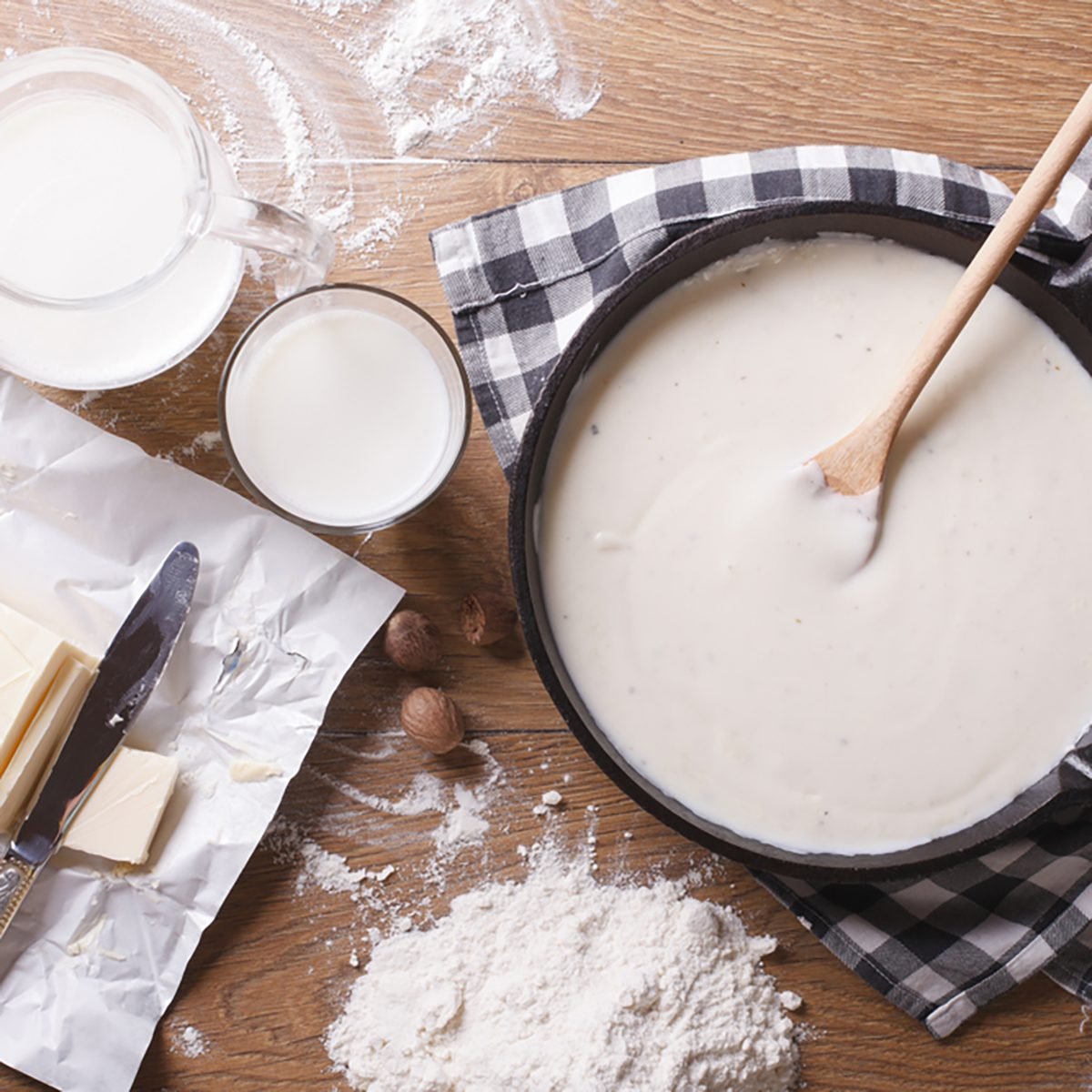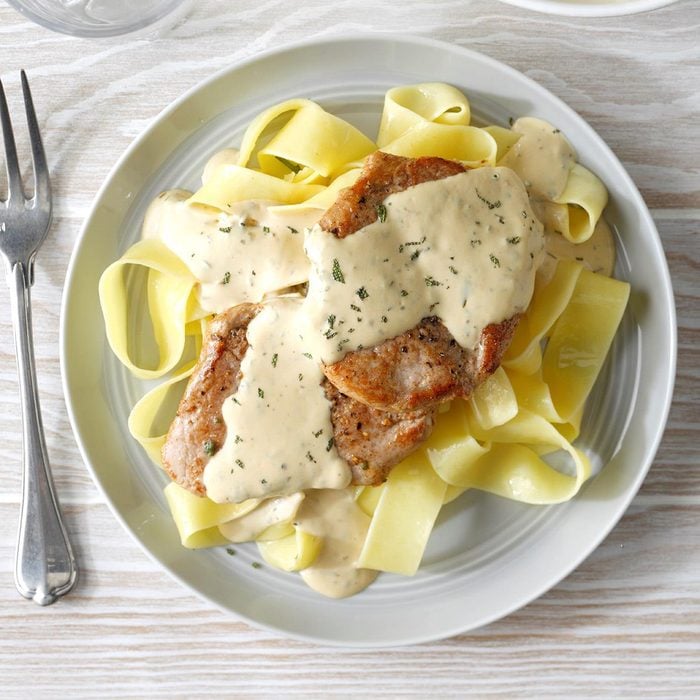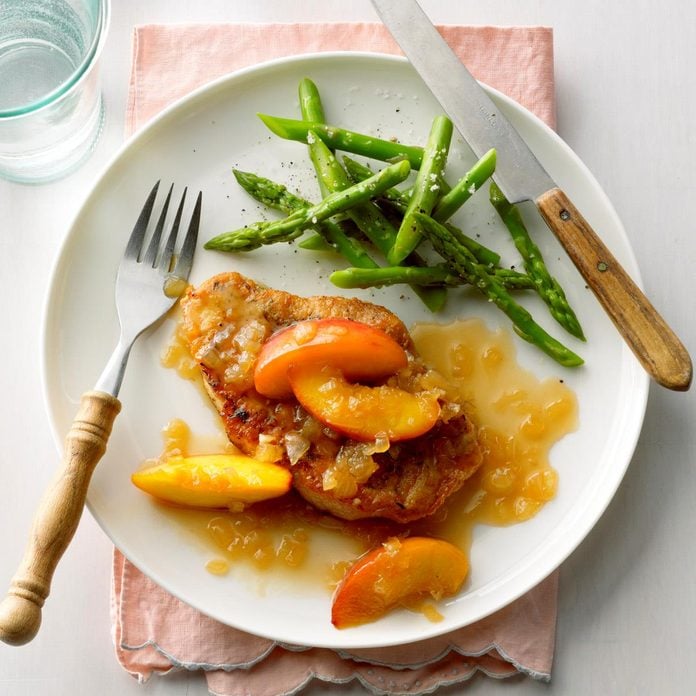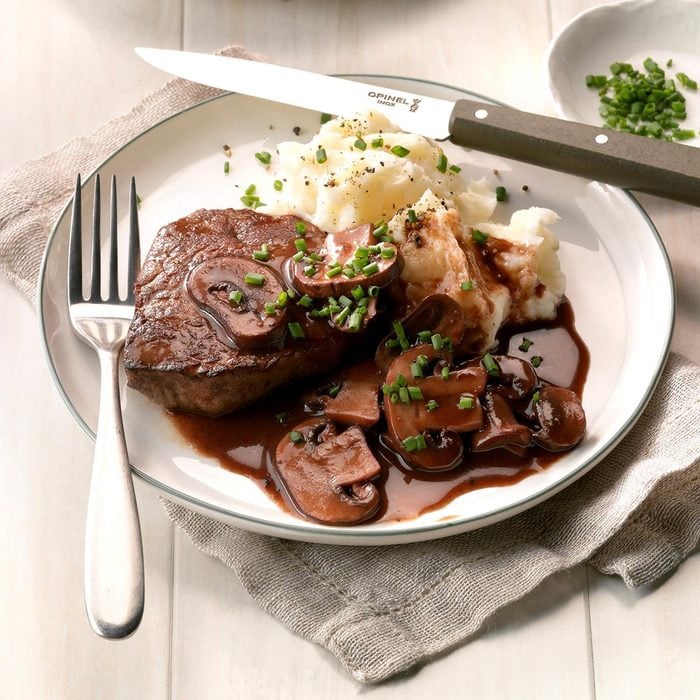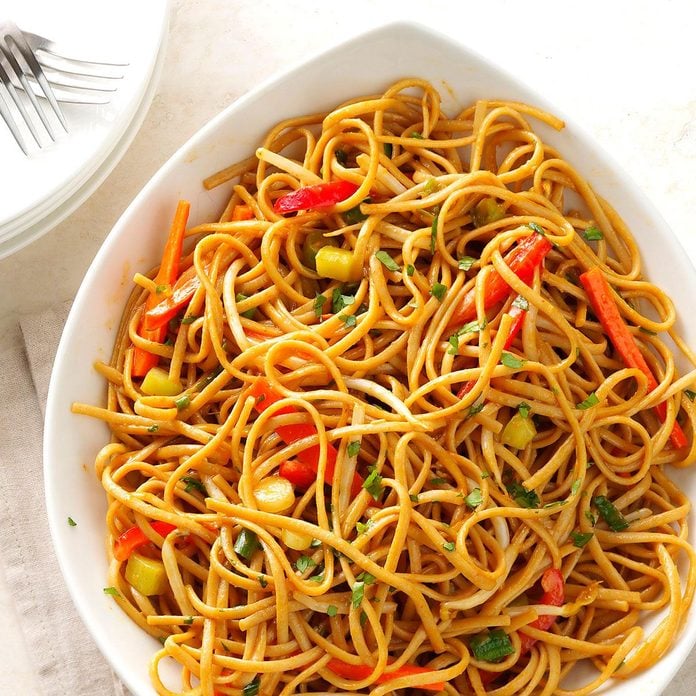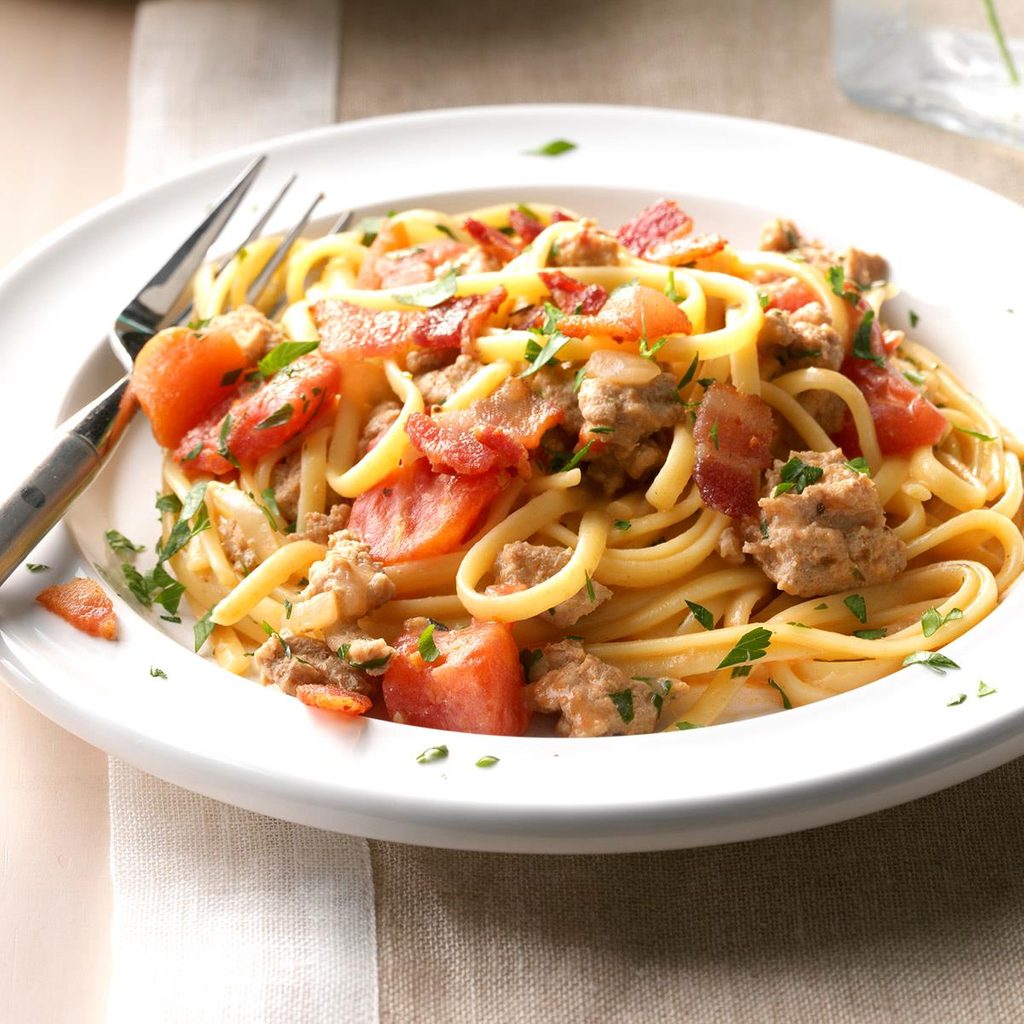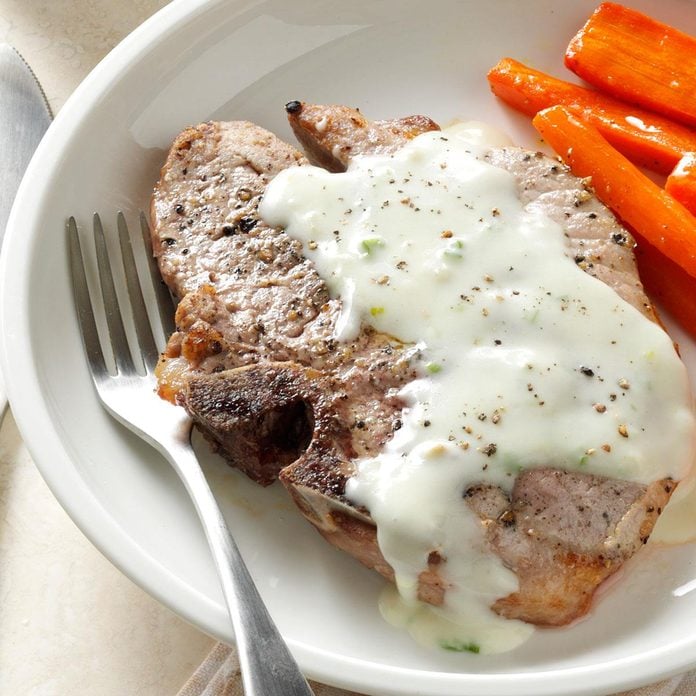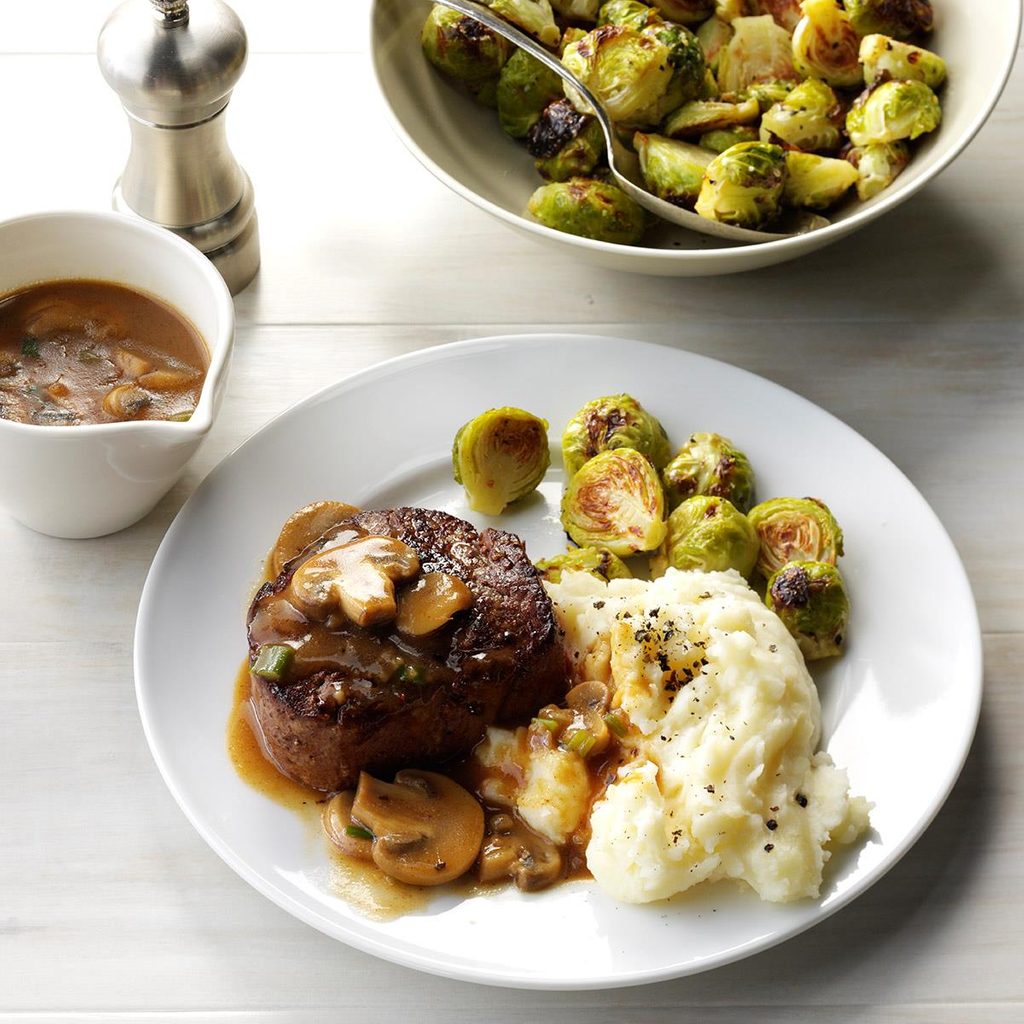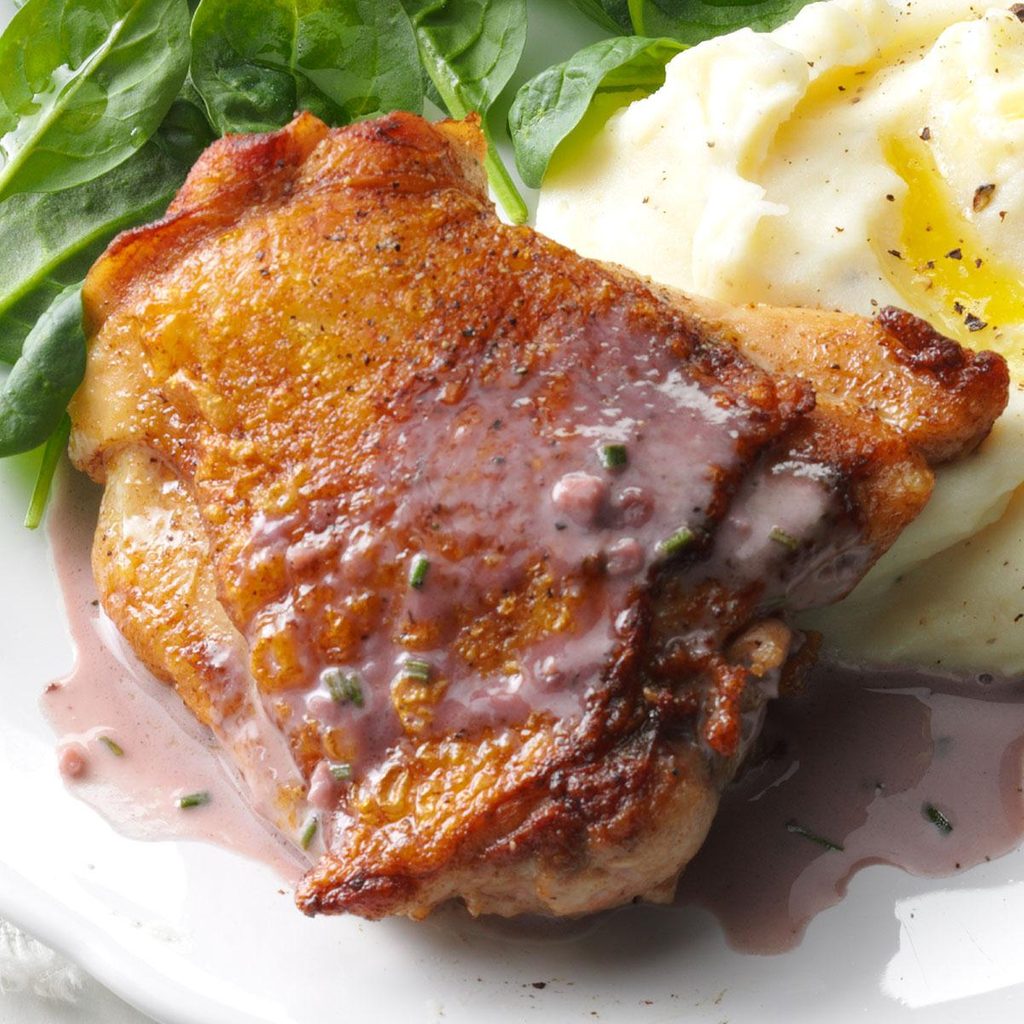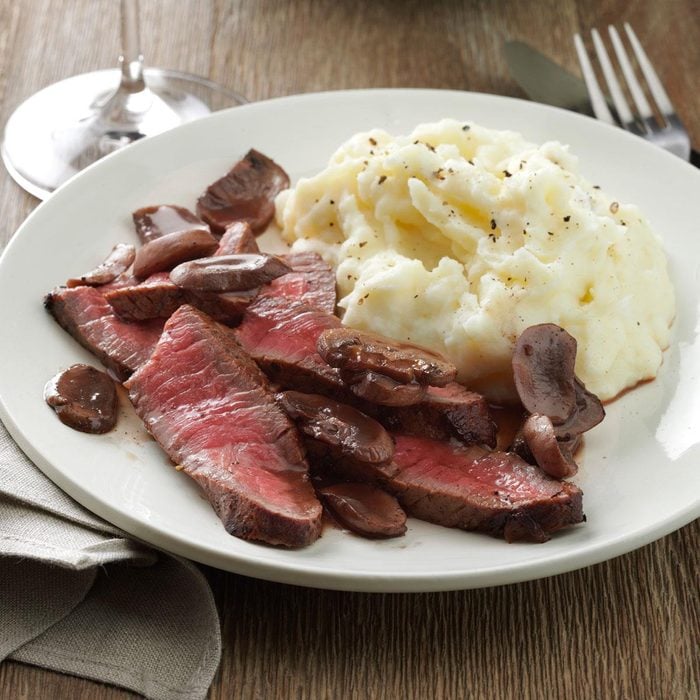It happens to the best of us: You followed the recipe to a T, but it just didn’t turn out as you expected. Isn’t a gravy supposed to be thick enough to coat the back of a spoon? Shouldn’t an Alfredo sauce cling to the sides of the pasta noodles?
Professional recipe developers (including the folks in our Test Kitchen) try to anticipate everything, but sometimes other factors get in the way. Maybe you prefer your gravy a touch thicker than they do, or perhaps the amount of humidity in your kitchen affected the thickening power of your flour.
Use these tips and tricks to fix thin, runny soups and lackluster gravies without thinking twice.
1. Flour
If being gluten-free isn’t a concern, adding flour is a fantastic way to thicken dairy-based sauces, thick soups and gravies. My preferred method is to make a roux (a combination of equal parts fat and all-purpose flour) and whisk in 2 ounces for every cup of liquid. Since the flour is already cooked in the roux-making process, you won’t run the risk of the dish tasting like raw flour—or of making your family sick.
Alternatively, you can add a little water directly to raw flour, using about 2 tablespoons for every cup of liquid in your recipe. Whisk the slurry into the pot and simmer it for a few minutes, or until the sauce has thickened and the taste of flour is cooked out.
Keep in mind that flour will make your sauce cloudy, so if you need to maintain clarity while increasing the viscosity, the next thickener is a better option.
2. Cornstarch or arrowroot
Arrowroot and cornstarch are gluten-free alternatives to thickening with flour. They’ll also keep your sauce clear and cloud-free. You’ll need about 1 tablespoon for every cup of liquid in the recipe. Mix the cornstarch with equal parts water to create a slurry and pour it into the pot. Whisk continuously over high heat until the cornstarch is well incorporated and the sauce starts to thicken. (Learn more about when you can eat cornstarch.)
What’s the difference between the two? In a nutshell, arrowroot is naturally GMO-free and freezes better than cornstarch. It does become slimy when combined with dairy, though, so skip it as your gravy thickener.
3. Tomato paste
The best time to add tomato paste is at the beginning of the recipe—heating it releases the essential oils and also caramelizes the sugars—but you can whisk it in near the end to help tomato-based soups and sauces bind. You could also add it to brown sauces or beef stews, but since it adds a burst of color and tomato flavor, we wouldn’t recommend it for dairy-based sauces.
4. Reduce the liquid
If you have plenty of extra time, reducing the liquid down is a great way to thicken things up. As the liquid evaporates, the other flavors will concentrate, too, which may or may not be a good thing. Since simmering a huge stockpot of sauce can take a while, you could remove a portion of the sauce to a wide saute pan to speed things up a bit. Then, just stir it back into the main pot when it’s nice and thick.
5. Swirl in a pat of butter
This method won’t add a serious amount of thickness, but it will give you an extra boost if you’re close but not quite there. Just make sure to swirl the butter into your sauce at the very end of the cooking process. The butter-infused sauce will break if it’s exposed to high heat, defeating the purpose of its thickening power.
6. Add an egg yolk
Egg yolks are a classic way to thicken salad dressings and custards, but they also work wonders for thickening rich cream sauces. To prevent the egg from scrambling, place the egg yolk in a bowl and slowly whisk in about a cup of the hot sauce. Then, add the tempered yolk mixture to the pot, whisking as you go.
The egg yolk method also works really well as a way to save a broken sauce.
7. Puree some vegetables
Starchy vegetables—like potatoes, winter squash or celeriac—are excellent thickening agents, especially if they’ve been pureed. Simply roast or boil these vegetables and pop them into the food processor until smooth. Then, stir it into the sauce, and voila: It will instantly be thicker! You could also use steamed and mashed cauliflower, or any kind of cooked beans or lentils, keeping in mind that the latter would add additional flavors to the dish.
Depending on the type of recipe you’re making, you may also be able to puree half or more of your soup or sauce to thicken it up. It would reduce the dish’s chunky consistency, but it would thicken things up without introducing any extra ingredients.
Next time your sauce is a little thin, experiment with these solutions. You’re bound to find one that works for your recipe.
Quick & Saucy Dinner Recipes
Chicken with Tarragon Sauce
This is comfort food at its finest. I cook it at least once a week and usually serve it with homemade mashed potatoes and sautéed fresh green beans. —Cher Schwartz, Ellisville, Missouri
Go to Recipe
Tenderloin with Herb SauceTender pork is treated to a rich and creamy sauce with a slight red pepper kick. This hearty dish is very simple to prepare and is always a dinnertime winner at my home. —Monica Shipley, Tulare, California
Chicken with Cherry Wine SauceMy dad's a chef, so I learned to cook at an early age. This saucy chicken was the first dish I made by myself. —Ben Diaz, Azusa, California
Pork with Mustard SauceBack when I was a girl, I couldn't wait until I was grown up and could start cooking for my own family! Now that I am, I really enjoy using pork. The tender meat and the rich mustard sauce in this recipe are delectable together. —Irma Pomeroy, Enfield, Connecticut
Pork Chops with Nectarine SauceAs a dietitian, I’m always looking for ways to make meals healthy and delicious. These juicy chops are fast, too. —Suellen Pineda, Victor, New York
Steak and Portobello MushroomsSteak and portobello mushrooms is a dish inspired by French cuisine, which is known for its rich, yet simple flavors. While this dish looks and tastes gourmet, it takes just 20 minutes to prepare.
Thai Pasta with Spicy Peanut SauceWe love how the whole wheat pasta and crisp, raw vegetables blend with the rich and creamy peanut sauce. The addition of fresh lime juice really brightens the flavor of the dish. Some eat it hot, but my husband and I prefer to wait until it's closer to room temperature. —Donna McCallie, Lake Park, Florida
Pork Medallions in Mustard SauceI like pork medallions with apricot preserves and wondered how else I could dress them up. I played around with different flavors until I found this combo. Wows every time. —Tahnia Fox, Trenton, Michigan
Chicken with Mushroom SauceEasy yet elegant, chicken with mushroom sauce begs to be made on a cozy autumn evening. Serve over a bed of potatoes or polenta to soak up all the yummy sauce.
Grilled Shrimp with Spicy-Sweet SauceThese finger-lickin' shrimp practically fly off the platter at my get-togethers. Play with the amount of sriracha to get the spice level just the way you like it. —Susan Harrison, Laurel, Maryland
Cod with Hearty Tomato SauceCod in tomato sauce is a sweet, flavorful recipe that goes excellently with nutty grains and starches such as brown rice or whole wheat pasta.
Turkey Scallopini with Marsala SauceMy family requests this entree at least once a month. The slightly sweet Marsala sauce is yummy over the turkey slices and hot cooked noodles. —Briana Knight, Ferndale, Washington
Jamaican Salmon with Coconut Cream SauceWe try to eat salmon a lot because it's so healthy, and I love thinking of new ways to make it different and delicious. This dazzler is easy and is my go-to meal for company. —Joni Hilton, Rocklin, California
Shrimp in Mango Chili SauceOn-hand ingredients make a tasty shrimp entree in a matter of minutes! Try the shrimp over waffles or rice for another yummy option. —Arlene Erlbach, Morton Grove, Illinois
Turkey Linguine with Tomato Cream SauceI love an easy weeknight meal! This meal comes together quickly and uses up the half block of cream cheese that always ends up in my fridge. —Amy Lents, Grand Forks, North Dakota
Pork Chops with Blue Cheese SauceSometimes a sauce is just a sauce, but with these tender chops, it really makes the dish. If you like a little spice, mix a pinch of nutmeg with the black pepper before you sprinkle it on the meat. —Kathleen Specht, Clinton, Montana
Chicken with Creamy Jalapeno SauceMy sister Amy came up with this recipe that makes standard chicken breasts a lot more exciting. My husband and I just love the wonderful sauce. —Molly Cappone, Lewis Center, Ohio
Grilled Pork Chops with Sticky Sweet SauceJuicy pork chops so flavorful and so easy, you might never guess the dish has just four simple ingredients. —Angela Spengler, Tampa, Florida
Turkey with Lime Butter SauceWhen I’m in Florida, I buy Key limes for the butter sauce, but any fresh limes work just fine. If I'm using leftover turkey, I brown the meat a little so the sauce picks up the flavor. —Patricia Kile, Elizabethtown, Pennsylvania
Pesto GnocchiPerk up gnocchi and vegetables with a flavorful pesto sauce. If you don't have pine nuts to top the pesto gnocchi, skip them or substitute any nut you like.
Pork and Red Wine SauceIs there any dish cozier than tenderloin pork and red wine sauce? This one is an easy option when you need a quick dinner that still feels like a full meal.
Beef Tenderloin and Mushroom SauceThis beef tenderloin and mushroom sauce is ideal for any celebratory dinner. The flavorful drippings from the pan create the base for its creamy gravy topping.
Honey-Garlic Pork ChopsTender pork loin chops and a sweet but salty Chinese-inspired glaze go together beautifully in these honey-garlic pork chops. The recipe is low on fat, sodium, prep time and skills required, making it a solid weeknight option.
Turkey Cutlets in Lemon Wine SauceAfter I ate something like this at a local Italian restaurant, I figured out how to make it at home for my family. Now I serve it a lot since it's so quick to make—and they're so happy I do. —Kathie Wilson, Warrenton, Virginia
Pork Chops with Dijon SauceHere's a main course that tastes rich yet isn't high in saturated fat. It's easy for weeknights, but the creamy sauce makes it special enough for weekends. —Bonnie Brown-Watson, Houston, Texas
Pan-Fried Chicken ThighsPan-fried chicken thighs are the easiest, tastiest weeknight dinner you can make. Dress them up with your favorite spices and sides and you have got a meal in a flash.
Pork Medallions with Garlic-Strawberry SauceThese crispy pork medallions are treated to a refreshing strawberry sauce that's ideal for a springtime or summer meal. —Taste of Home Test Kitchen
Sirloin with Mushroom SauceA mouthwatering combination of rich brown mushroom sauce and tender strips of peppery steak is a wonderful way to end a busy day. It’s special enough to make for company and ready in less than 30 minutes. —Joe Elliott, West Bend, WI
Blackberry-Sauced Pork ChopsMy family loved these chops from the first time I fixed them. They're as tasty in a skillet as they are grilled, so you can eat them all year long. The sauce is also fantastic with chicken. —Priscilla Gilbert, Indian Harbour Beach, Florida
Pork Chops and ApplesauceIf you love the lean, tender texture of pork chops but wish they had more flavor to offer, this recipe for pork chops and applesauce solves the conundrum. You can pretty much let the oven do the work too.
